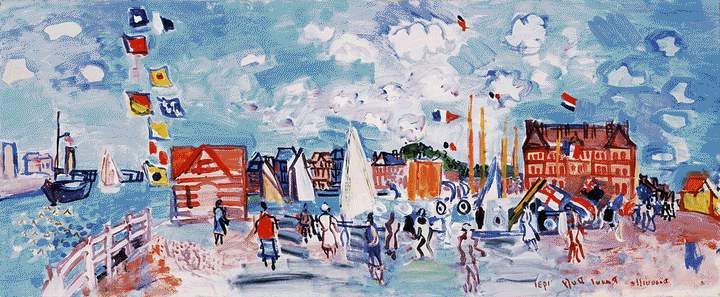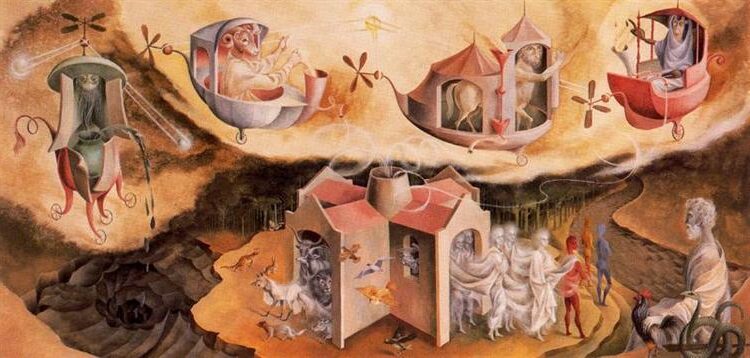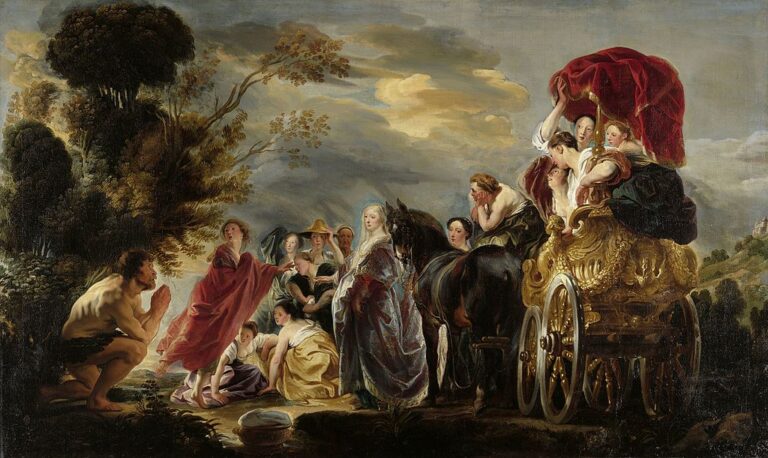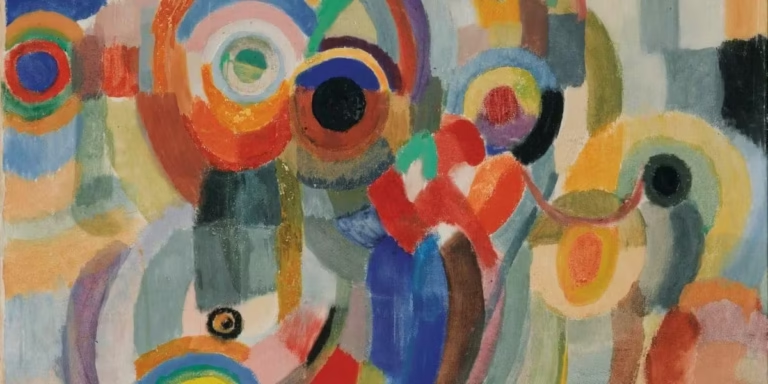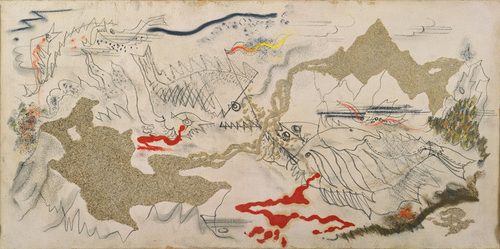Raoul Dufy: Painter of Vibrant Colors and Joyful Scenes
Born: 3 June 1877, Le Havre, France
Death: 23 March 1953, Forcalquier, France
Art Movement: Fauvism, Impressionism, Cubism
Nationality: French
Teacher: Charles Lhuillier
Institution: École Municipale des Beaux-Arts, Le Havre.
Raoul Dufy: Painter of Vibrant Colors and Joyful Scenes
Life and Education of Raoul Dufy
Raoul Dufy‘s life and education shaped his artistic journey. His early years in Le Havre, formal art training, and military service all played key roles in his development as a painter.
Early Life and Influences
Raoul Dufy was born on June 3, 1877, in Le Havre, Normandy. He grew up in a large family with ten siblings. His father worked as an accountant and was also a musician. This creative home environment likely sparked Dufy’s artistic interests.
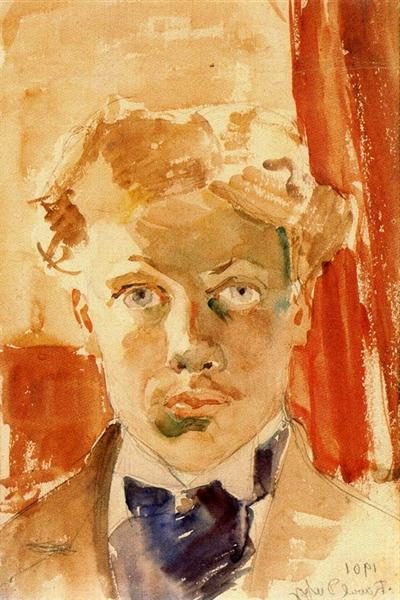

Le Havre, a busy port city, exposed young Dufy to vibrant scenes of boats, beaches, and bustling streets. These sights would later inspire many of his paintings.
At age 14, Dufy left school to work for a coffee importing company. Despite this early job, his passion for art continued to grow.
Formal Education and Mentors
In 1900, Dufy moved to Paris to study at the École des Beaux-Arts. This prestigious school helped him refine his skills and learn classical techniques.
One of his key mentors was Charles Lhuillier, who taught him at the École Municipale des Beaux-Arts in Le Havre. Lhuillier’s guidance was crucial in Dufy’s early artistic growth.
During his time in Paris, Dufy was exposed to various artistic styles. He was particularly inspired by the bright colors used by the Fauvist painters.
Military Service and Early Career
Dufy’s art studies were interrupted by military service from 1899 to 1902. This experience broadened his worldview and exposed him to new subjects for his art.
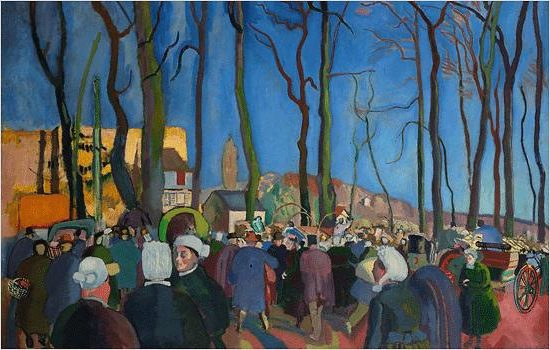
The Onion Market (La Foire aux Oignons, c. 1907)
After his service, Dufy returned to his art studies. He also began working as a commercial illustrator to support himself.
In the early 1900s, Dufy started to gain recognition for his paintings. His style evolved from Impressionism to Fauvism, showing his growth as an artist.
Artistic Style and Notable Works
Raoul Dufy made his mark with bright colors, loose brushwork, and a decorative style. He worked in many forms, from paintings to textiles.
Development of Artistic Style
Dufy’s style changed over time. He started with Impressionism and then moved to Fauvism. Fauvism used bold colors and simple shapes. Dufy loved this new way of painting. He met Henri Matisse, a leader in Fauvism, and learned from him.
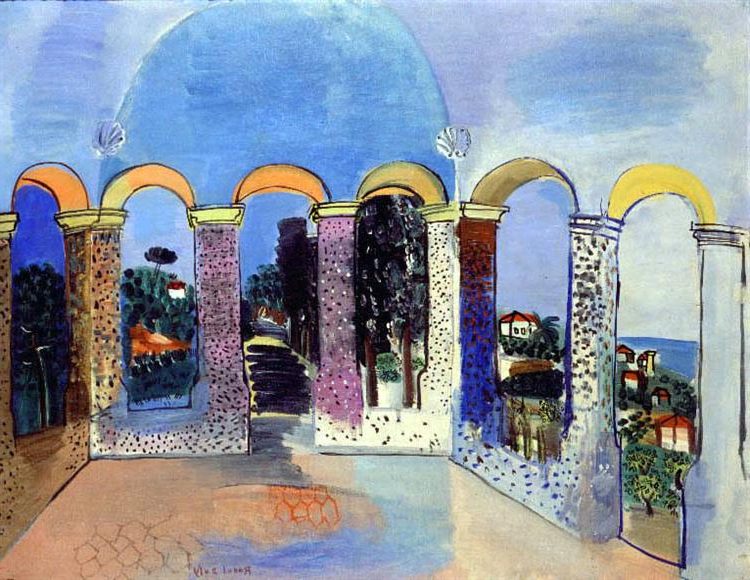
Arcades at Vallauris (1927) by Raoul Dufy
Later, Dufy found his own style. He used light, quick brushstrokes and bright colors. His work had a happy, carefree feel. He often painted outdoor scenes and social events.
Dufy also tried Cubism for a while. This style broke objects into geometric shapes. But he didn’t stick with it for long.
Major Contributions to Art
Dufy did more than just paint. He made designs for fabrics and ceramics. His art was used on clothes, dishes, and home items. This helped bring modern art to everyday life.
He worked with fashion designers to create unique fabrics. His patterns were bright and fun. They became very popular.
Dufy also made large murals for public spaces. His biggest work was “La Fée Electricité” (The Electricity Fairy). It was a huge painting about the history of electricity.
He helped mix fine art with design. This was a new idea at the time.
Famous Artworks and Exhibitions
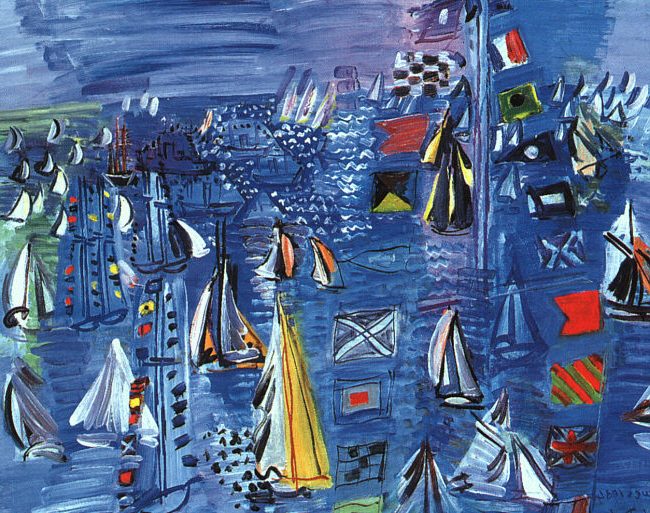
Regatta at Cowes (1934) by Raoul Dufy
Some of Dufy’s best-known paintings are:
- “The Regatta at Cowes”
- “The Orchestra”
- “The Race Track at Epsom”
These show his love of bright colors and busy scenes. He often painted boats, music, and horse races.
Dufy showed his work at the Salon des Indépendants in Paris. This was a big art show for new artists. His work was also shown at the Museum of Modern Art in New York.
In 1952, he won a top prize at the Venice Biennale. This is a famous art show held every two years. It helped make Dufy known around the world.
Legacy and Impact on Public Spaces
Raoul Dufy’s art left a lasting mark on public spaces. His vibrant style shaped buildings, textiles, and outdoor areas. Dufy’s work went beyond canvas, influencing how people interact with shared environments.
Public and Private Commissions
Dufy took on many big projects for public and private spaces. He painted murals for the Paris Electric Power Company in 1937. This huge work covered 600 square meters. It showed the history of electricity.

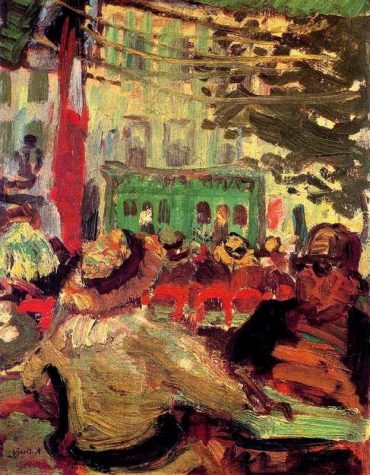
He also made art for wealthy clients’ homes. Dufy designed colorful textiles and wallpapers. These brought his lively style into everyday life. His patterns were popular in fashion and home decor.
Dufy’s art appeared in public buildings too. He created pieces for town halls, theaters, and museums. His work made these spaces more lively and welcoming.
Influence on Modern Public Spaces
Dufy’s art changed how people think about public spaces. His use of bright colors and simple shapes inspired other artists and designers. Many modern public areas now use bold colors and patterns like Dufy’s.
His love of outdoor scenes, like regattas and beaches, influenced public park designs. Planners started adding more color and fun elements to parks and plazas. Dufy’s scenes of social gatherings also shaped how public spaces are used today.
Dufy’s work in book design and illustration affected public literacy programs. Libraries and schools began using more colorful, eye-catching designs to attract readers.
Health Struggles and Later Years
In his later years, Dufy faced health problems. He got rheumatoid arthritis in the 1940s. This made it hard for him to paint. But he kept working and found new ways to create art.
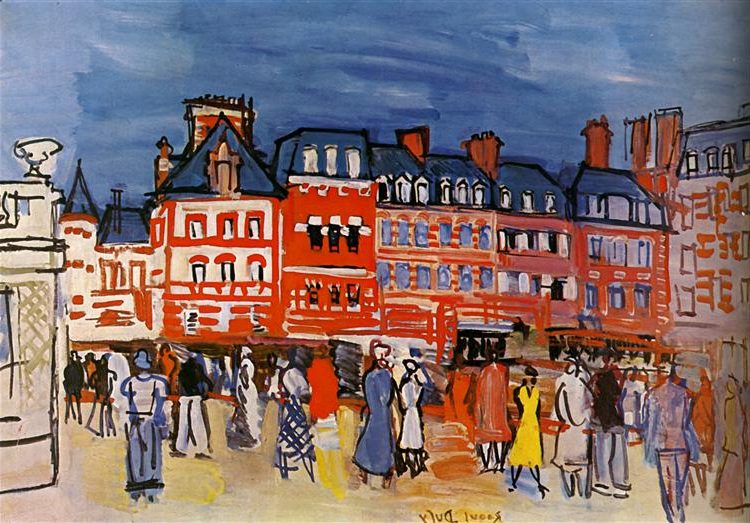
Houses in Trouville (Maisons à Trouville, 1933)
Dufy spent time on the French Riviera to help his health. The warm weather and beautiful views inspired his late works. He painted many scenes of the coast and sea.
Despite his illness, Dufy kept getting recognition. He won the painting prize at the 1952 Venice Biennale. This award celebrated his lifetime of work and influence on French art.
Frequently Asked Questions
Raoul Dufy’s art career and works spark many questions among art enthusiasts. Here are answers to some common inquiries about the French painter‘s legacy and techniques.
What is the value of Raoul Dufy’s paintings in today’s market?
Raoul Dufy’s paintings fetch high prices at auctions. His works typically sell for tens of thousands to several million dollars. Prices vary based on size, subject matter, and the painting’s place in Dufy’s career.
Which painting by Raoul Dufy is considered his most expensive work?
“La Fée Électricité” (The Electricity Fairy) is often cited as Dufy’s most valuable piece. This massive work, measuring 600 square meters, was commissioned for the 1937 Paris International Exposition.
How can one distinguish an authentic Raoul Dufy signature on artwork?
Dufy’s signature usually appears in the lower right or left corner of his paintings. It is typically written in cursive, with a flowing style. Art experts use UV light and microscopic analysis to verify authenticity.
What are the characteristic techniques used by Raoul Dufy in his artwork?
Dufy is known for his vibrant colors and light-hearted subjects. He used a technique called “color-light,” where he applied thin washes of color over sketchy outlines. His style often features loose brushwork and a sense of movement.
Where can collectors find Raoul Dufy original paintings for sale?
Dufy’s works appear at major auction houses like Christie’s and Sotheby’s. Art galleries specializing in 20th-century art also offer his paintings. Museums occasionally deaccession Dufy works, making them available for purchase.
Can you share some lesser-known facts about Raoul Dufy’s life and art career?
Dufy started his career as a colorist for a textile company. He created fabric designs that influenced his painting style. Later in life, Dufy suffered from rheumatoid arthritis. This affected his ability to paint but didn’t stop his creative output.

